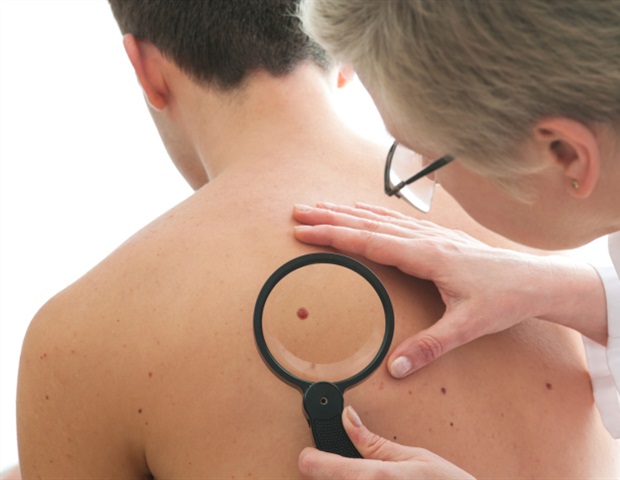A recent study posted to the medRxiv* preprint server found that severe acute respiratory syndrome coronavirus 2 (SARS-CoV-2) infection during the Omicron variant predominant period was associated with post-acute symptoms of coronavirus disease 2019 (COVID-19) or ‘long COVID’, as well general health problems with new onset – four months after a COVID-19 positive test result.
Meanwhile, the frequency of symptoms and health-related problems during the Omicron wave reduced amongst those who had received the third (booster) COVID-19 vaccination dose before the SARS-CoV-2 infection. Notably, these symptoms and health-related issues were more prevalent during the Delta period.
Study: Post-acute symptoms four months after SARS-CoV-2 infection during the Omicron period: a nationwide Danish questionnaire study. Image Credit: Dmitry Demidovich / Shutterstock
Background
Post-acute symptoms of COVID-19 have been constantly discussed and are of current interest. However, the variations in the frequency, severity, and, more importantly, the duration of these symptoms after infection with different SARS-CoV-2 variants of concern (VOCs) remains unexplored.
The Omicron variant had posed less severe symptoms among the vaccinated population but higher transmissibility and immune evasion potential. Further, milder post-acute symptoms were reported during the Omicron wave than during the Delta wave.
However, the protection provided by vaccination from the post-acute symptoms after Omicron infection remains unexplored. Additionally, the impact of three COVID-19 vaccination doses on post-acute symptoms after breakthrough infection with the Omicron variant is yet to be studied.
The study
The present study used data from an extensive nationwide Danish questionnaire survey to evaluate the risk of 26 post-acute symptoms after a breakthrough infection with the Omicron variant – four months after a COVID-19-positive test report.
The post-acute-infection symptoms studied included – fatigue, physical, cognitive and mental functioning, and five newly developed health problems four months after a COVID-19 test result. The Omicron-infected cases were compared to controls—who tested negative for the infection––during the Omicron predominance period and to the Delta-positive cases during the period of the predominance of the Delta variant. The effect of booster vaccination doses (comparing two and three doses during the Omicron wave) was also studied.
The cohort comprised individuals older than 15 who contracted SARS-CoV-2 infection (tested by RT-PCR) for the first time during the study period. At the same time, individuals who tested negative during the same period were also included in a ratio of 2:3.
Results
34,616 participants were recruited from the Omicron phase, and 9,388 SARS-CoV-2 positive individuals were recruited from the Delta phase. The proportion of female participants from the Omicron predominance phase was higher; moat participants from either gender belonged to older age groups. Similarly, most SARS-CoV-2 positive participants from the Delta phase were females and older adults.
Among the participants from the Omicron phase, 41% had at least one comorbidity; the prevalence of chronic disease was 39% among the SARS-CoV-2 positive participants from the Delta phase. The most common comorbidity was hypertension.
Risk of post-acute symptoms
Four months after a confirmatory infection, the most common post-acute symptom was fatigue/exhaustion, muscle/joint pain, headache, and runny nose. The prevalence of these post-acute symptoms during the Omicron phase matched those in the Delta phase.
The risk differences (RDs) were higher for 18 out of the 26 post-acute symptoms during the Omicron phase. However, on comparisons of post-acute symptoms of the Omicron and Delta phases, eight of these 18 symptoms had much lower RDs and a greater risk of anxiety.
Of note, the risk of dysosmia and dysgeusia decreased during the Omicron period. In addition, reduced RDs for 13 out of the 26 symptoms were documented among COVID-19-positive individuals who had received the third vaccine dose during the Omicron period, compared to those who received only two vaccination doses. While none of the RDs for any post-acute symptom showed an increase.
The most significant differences in the post-acute phase were recorded for fatigue, peripheral muscular strength, anxiety, and depression symptoms. Interestingly, those who had received the third vaccination dose had lower odds of having abnormal depression and anxiety scores during the Omicron phase.
Risk of general health problems
During the Omicron period, 38.1% of the cases and 30.5% of controls presented with a new onset of at least one post-acute symptom––four months after a SARS-CoV-2 test result. The prevalence was 42.3% during the Delta period. Further, the RDs of all five new-onset post-acute symptoms were higher among the cases during the Omicron period than those in the controls.
Memory issues accounted for the greatest RDs, followed by mental exhaustion, concentration problems, physical fatigue, and sleep disorders. In contrast, markedly lower RDS for all five new-onset post-acute symptoms were documented for positive cases during the Omicron phase compared to those during the Delta phase.
Meanwhile, new-onset mental exhaustion, memory issues, and concentration problems were less common in individuals vaccinated with three doses than those who received two COVID-19 vaccination doses – four months after infection during the Omicron period.
The positive cases during the Omicron period recorded 14% more post-acute physical symptoms than the controls. Whereas positive cases during the Omicron phase had fewer (12% less) post-acute physical symptoms than those during the Delta phase.
Those who received three vaccination doses showed a lower frequency (9%) of post-acute physical symptoms than those vaccinated with two doses of COVID-19 vaccines.
Therefore, the findings depicted that the Omicron variant precipitated milder post-acute symptoms; the third (booster) vaccination dose also reduced the frequency of post-acute symptoms and new-onset health problems four months after a breakthrough infection.







